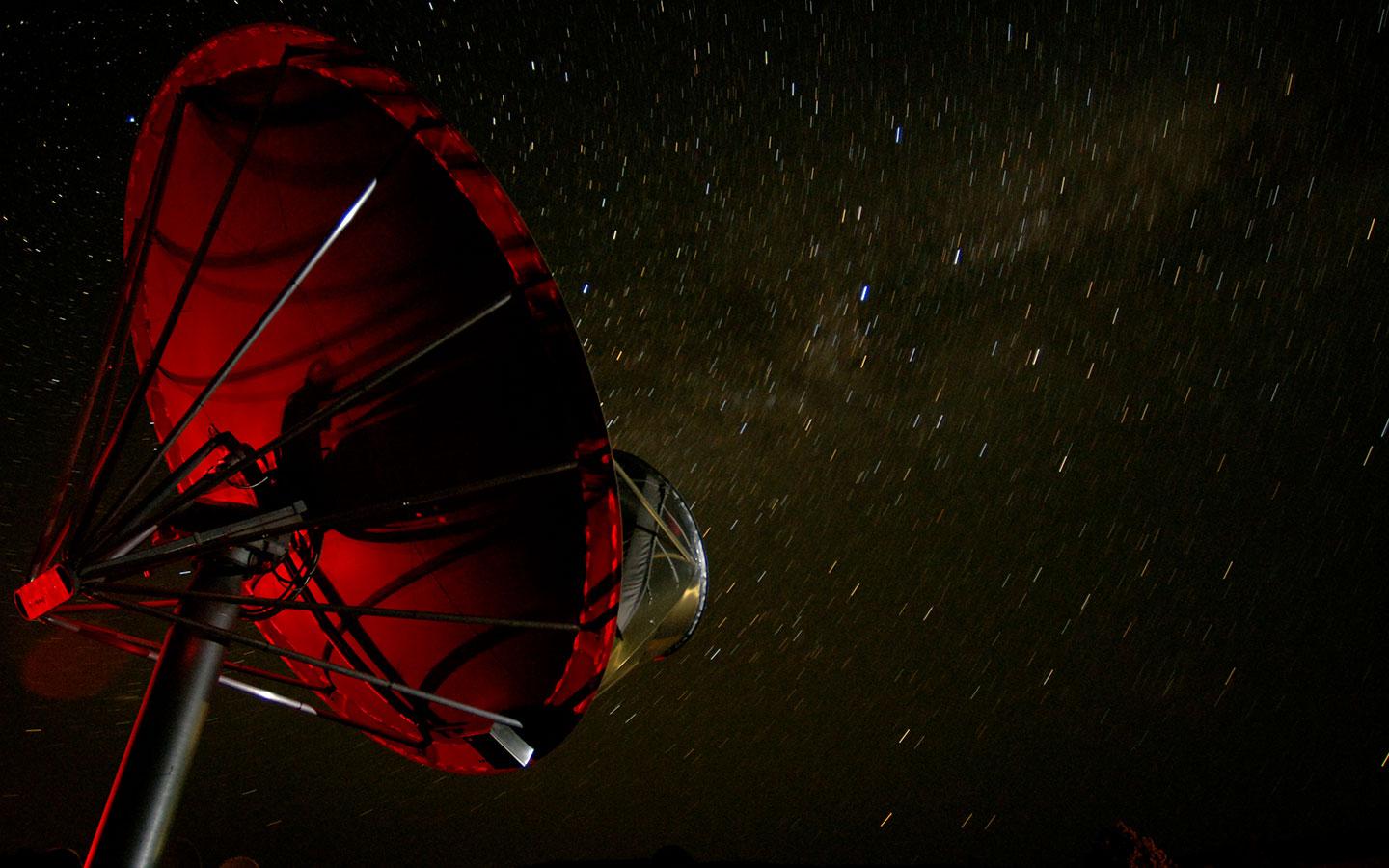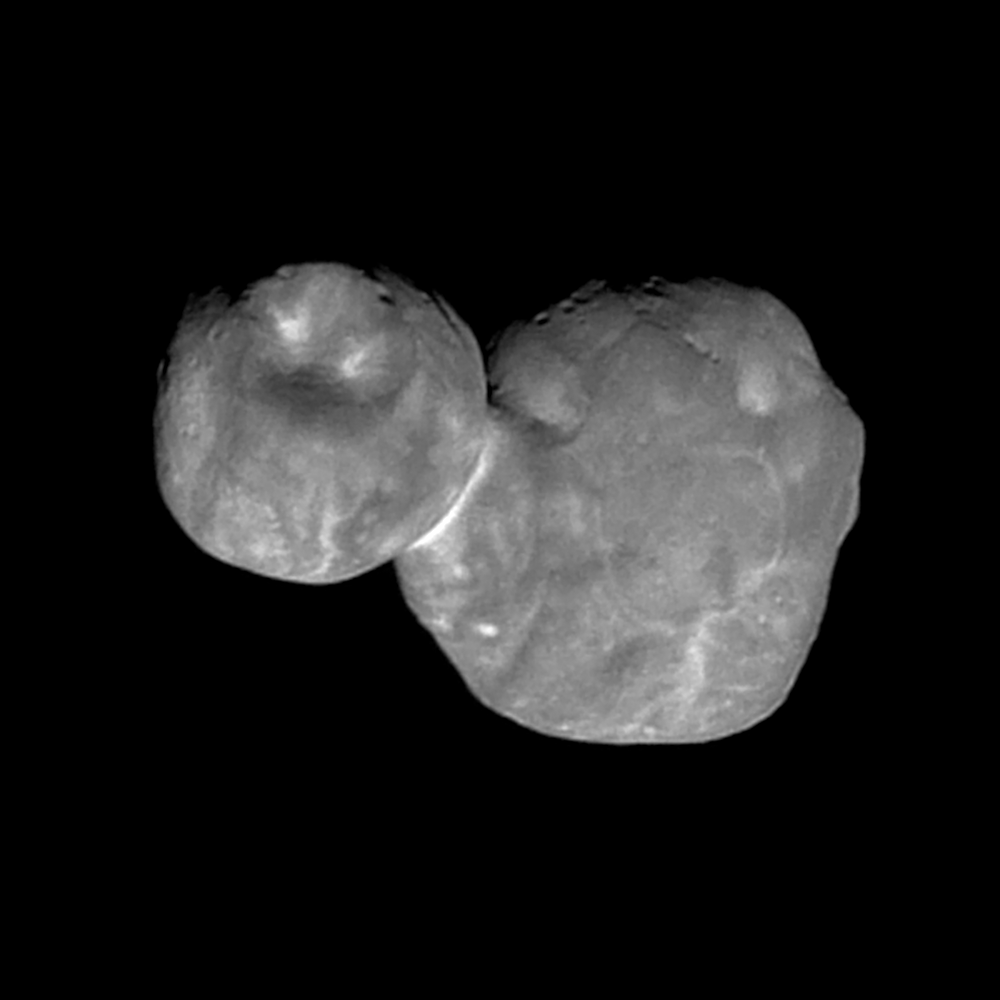
National Geographic presents a deep dive into the question of how the search for life beyond earth is developing. Unsurprisingly, a number of SETI Institute scientists were featured, including SETI Institute research scientist Jon Richards:
When Jon Richards answered an ad in 2008 on Craigslist for a software programmer, he couldn’t have imagined he would spend much of the next 10 years in a remote valley in Northern California, looking for aliens. The search for extraterrestrial intelligence, or SETI, refers to both a research endeavor and a nonprofit organization, the SETI Institute, which employs Richards to run the Allen Telescope Array (ATA), a 340-mile drive from the institute’s headquarters in Silicon Valley. The ATA is the only facility on the planet built expressly for detecting signals from alien civilizations.
Richards develops and maintains the SETI search software, manages the observing schedule, and ensures that everything operates properly. He also may become the very first human to know if an extraterrestrial signal is detected:
If a signal passes tests that suggest it stems from neither a natural source nor some quotidian terrestrial one—a satellite, a plane, somebody’s key fob—the computer kicks out an email alert. This being an email he wouldn’t want to miss, Richards has set up his cell service to forward the message to his phone. Conceivably, then, our first contact from an alien civilization could come as a text rattling Richards’s phone on his night table.
But SETI research has broadened in many ways. Not only is the field increasingly transforming into a global effort, the search has widened beyond alien communication signals. As Seth Shostak, Senior Astronomer at the SETI Institute, points out, extraterrestrials might not be as interested in us as we are:
“We’re like trilobites, looking for more trilobites,” says Seth Shostak, a senior astronomer at the SETI Institute.
What we should be looking for is not a message from ET, but signs of ET just going about the business of being ET, alien and intelligent in ways that we may not yet comprehend but may still be able to perceive, by looking for evidence of technology—so-called technosignatures.
Technosignatures could be anything from lasers used in propulsion, to atmospheric pollution detected on a faraway world – just like us, alien civilizations may produce evidence of their presence. Even if extraterrestrials aren’t actively trying to contact us, we may yet be able to find their mark on their corner of the cosmos. The SETI Institute's Bernard M. Oliver Chair for SETI Research, Andrew Siemion, sums it up nicely:
“We’re not looking for a signal,” Siemion says. “We’re looking for a property of the universe.”
Other SETI Institute scientists included in the article include Jill Tarter, Nathalie Cabrol and Laurance Doyle.
- National Geographic: Life probably exists beyond Earth. So how do we find it?
 Star Shadows and Citizen Science
Star Shadows and Citizen ScienceStellar occultations occur when an observer views an object as it passes in front of a background star. The resulting eclipse allows stargazers to glean information about the object. Occultation science has become an increasingly popular research technique thanks to advances in camera and telescope technology. It is especially attractive for citizen scientists, enabling amateur astronomers to make significant contributions as Scientific American notes:
The technique’s most spectacular success arguably occurred in 2017, when amateur and professional astronomers combined to deliver remarkably accurate measurements of the size and shape of 2014 MU69, the KBO NASA’s New Horizons spacecraft flew past on New Year’s Day 2019. Dozens of telescopes monitored the events, including NASA’s SOFIA flying observatory, a 2.7-meter telescope housed in a modified Boeing 747 jet. The occultation itself lasted just two seconds but set New Horizons’ course for the coming years—without it, the spacecraft would not have risked such a close flyby of MU69 for fear of colliding with any undiscovered moons, rings or other debris.
SETI Institute senior research scientist and fellow Mark Showalter led the hazards avoidance team for the New Horizons flyby of MU69, nicknamed Ultima Thule, and co-wrote a paper discussing the information gained from the 2017 occultation observations.
Scientific American also highlighted the promising future of citizen science in occultation observations thanks to projects such as Unistellar’s eVscope:
Today the field is progressing faster than ever before, with exciting new capabilities on the horizon. Franck Marchis from the SETI Institute, for instance, has helped develop an automated telescope called the eVscope that amateurs can use to easily observe occultations when alerts are sent out.
Franck Marchis, a senior planetary astronomer at the SETI Institute and Chief Scientific Officer and Co-founder of Unistellar, helped to develop the eVscope, a compact smart telescope that the company hopes will create “the first global network of digital-astronomy observers”, and which successfully observed Pluto occulting a star in August of 2018.
- Scientific American: Astronomers Traverse the Globe to Shadow “Lucky Stars”
 Laurance Doyle Talks about Talking with Aliens
Laurance Doyle Talks about Talking with AliensLaurance Doyle, a research scientist at the SETI Institute, appeared on BYU Radio’s Top of Mind with Julie Rose to talk about his wide-ranging career, from searching for habitable planets with the NASA Kepler Science Mission, to deciphering alien language by studying the vocalizations of intelligent species on Earth.
- BYU Radio: Top of Mind with Julie Rose: When the Aliens Say Hello, Will We Understand?
- SETI.org: Humpback Whale Communication and the Search for Alien Intelligence
 Where is Everybody? Seth Shostak on BBC
Where is Everybody? Seth Shostak on BBCSeth Shostak, Senior Astronomer at the SETI Institute, presented a radio special for the BBC World Service asking the question: where is everybody?
Listen to hear interviews with: the renowned Dr. Jill Tarter, co-founder of the SETI Institute and Chair Emeritus for SETI Research; Andrew Seimion, the SETI Institute’s Bernard M. Oliver Chair for SETI Research; and Doug Vakoch, president of METI International.
 The Drake Equation in Science History
The Drake Equation in Science HistoryCosmos Magazine offered a brief look at Frank Drake and his impact on the scientific search for life beyond Earth. Chair Emeritus of the SETI Institute’s Board of Trustees, Drake launched the first attempt to detect radio transmissions from extraterrestrial intelligence with Project Ozma. In preparation for a conference following the experiment, Drake “quantified ET” with the creation of the eponymous Drake Equation, a tool to estimate the number of technological beings that might exists in the universe. Cosmos notes the Drake Equation “has become a widely accepted tool for considering the question of extraterrestrial intelligence”.
In last week’s episode, explore the good and bad ways technology is increasingly encroaching into our lives in Keeping Humans in the Loop. On our previous week’s episode, it’s our destinies written in the stars above vs. scientific empiricism, as BiPiSci’s monthly look at critical thinking tackles astrology in Skeptic Check: Astrology Ascending.
Last time on Facebook Live, the SETI Institute celebrated the IAU100 Women & Girls in Astronomy Day with Pamela Harman, Jill Tarter, Rosalba Bonaccorsi, Janice Bishop, Nathalie Cabrol, and Margaret Race. Videos of all past Facebook Live events can be found on our Facebook page: https://www.facebook.com/SETIInstitute/
- San Mateo County Astronomical Society: March 1, 2019, College of San Mateo, San Mateo, CA SETI Institute scientist Michael Busch will present Near Earth Asteroid Hazards, Research and Space Missions
- Kepler &K2 Science Conference V: March 4-8, 2019, Glendale, CA SETI Institute scientist Douglas Caldwell will present The Kepler Photometer
- 50th Lunar and Planetary Science Conference: March 18-22, 2019, The Woodlands, TX





